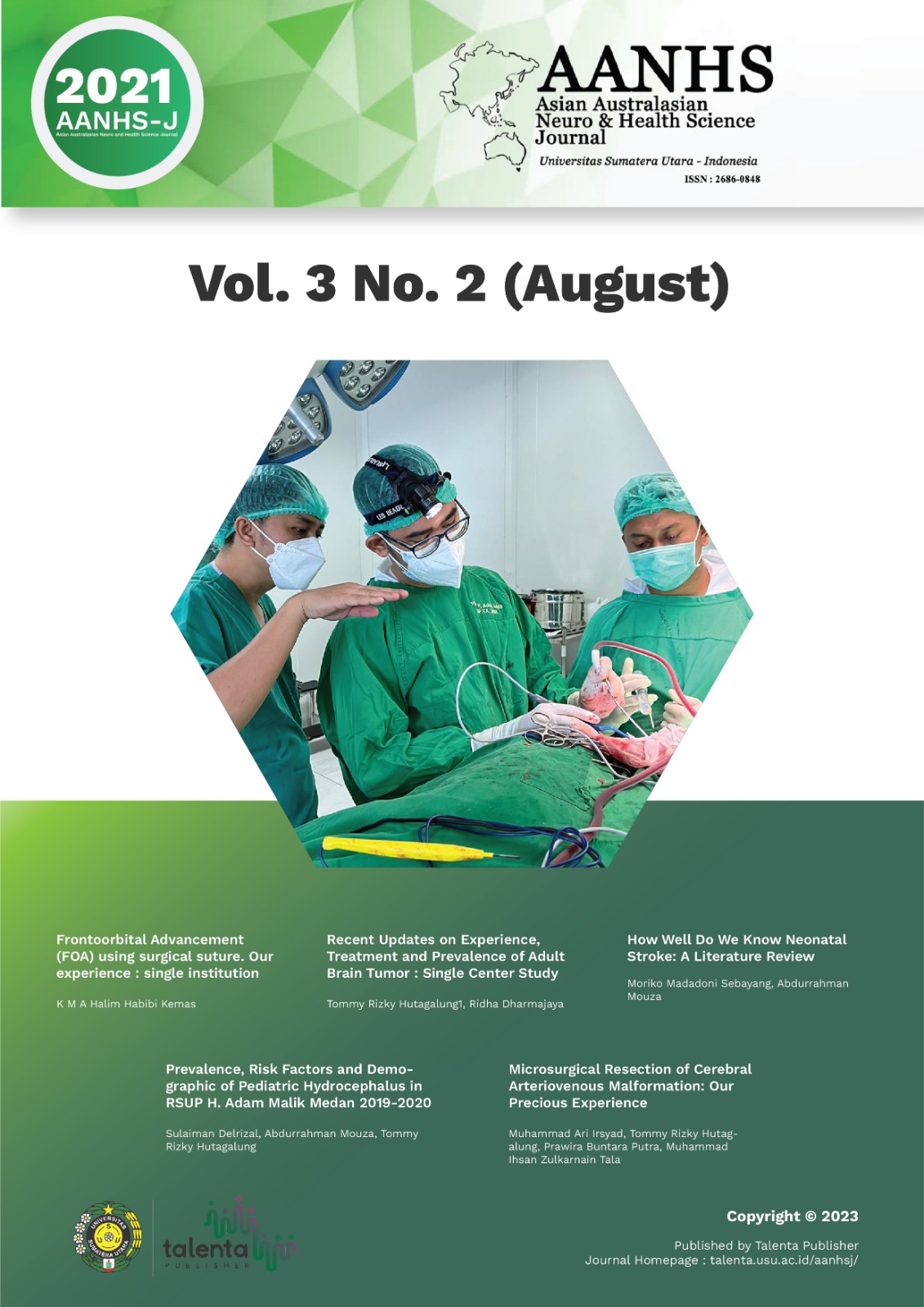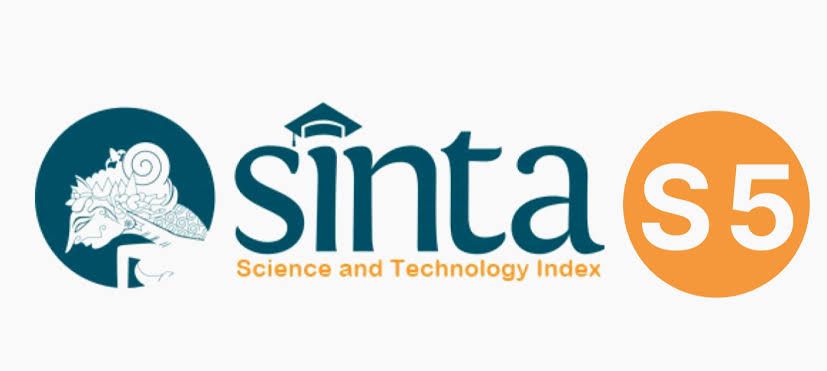Prevalence, Risk Factors and Demographic of Pediatric Hydrocephalus in RSUP H. Adam Malik Medan 2019-2020
DOI:
https://doi.org/10.32734/aanhsj.v3i2.6501Keywords:
communicans, hydrocephalus, obstructiveAbstract
Introduction: Hydrocephalus is a disorder of the central nervous system which manifests as excess cerebrospinal fluid found in the head either inside the ventricular system or the subarachnoid space. The prevalence and demographics of congenital hydrocephalus remain poorly defined, in part because the definition of “congenital hydrocephalus†varies between studies; depending on the clinical criteria used to define congenital hydrocephalus, the prevalence has been reported between 1 and 32 per 10,000 live births. Previously known several risk factors include infection during pregnancy (toxoplasmosis, CMV, meningitis), family history hydrocephalus (less than 2%), premature pregnancy and low birth weight (which may increase the incidence of intraventricular hemorrhage).
Method and Result : This Study was a descriptive study, we collected data from 2018-2019 at Haji Adam Malik General Hospital. From the data we found 58 cases of pediatric Hydrocephalus, with hydrocephalus obstructive 24 cases (41%) and communicans hydrocephalus 34 case ( 59%). Based on age, most samples were <6 months of age in both types of hydrocephalus. Most of the gender is male. Most of the GCS conditions at admission were GCS 13-15. The most common etiology in obstructive hydrocephalus cases was aquaduct stenosis in 13 cases (54%), while the most common etiology in cases of hydrocephalus communicans was infection in 22 cases (65%). Infection during pregnancy, low birth weight and premature pregnancy are thought to be the most risk factors found
Discussion : Hydrocephalus is described as non communicating when it is caused by lesions that obstruct CSF flow through the ventricular system, such as fourth ventricular tumors. Communicating hydrocephalus is present when the lesion is at the level of the subarachnoid spaces, arachnoid granulations, or the venous system. Previously known several risk factors include infection during pregnancy, family history hydrocephalus, premature pregnancy and low birth weight.
Downloads
Downloads
Published
How to Cite
Issue
Section
License
Copyright (c) 2021 Asian Australasian Neuro and Health Science Journal (AANHS-J)

This work is licensed under a Creative Commons Attribution-NonCommercial-NoDerivatives 4.0 International License.
The Authors submitting a manuscript do understand that if the manuscript was accepted for publication, the copyright of the article shall be assigned to AANHS Journal.
The copyright encompasses exclusive rights to reproduce and deliver the article in all forms and media. The reproduction of any part of this journal, its storage in databases and its transmission by any form or media will be allowed only with a written permission from Asian Australasian Neuro and Health Science Journal (AANHSJ).
The Copyright Transfer Form can be downloaded here.
The Copyright form should be signed originally and sent to the Editorial Office in the form of original mail or scanned document.














